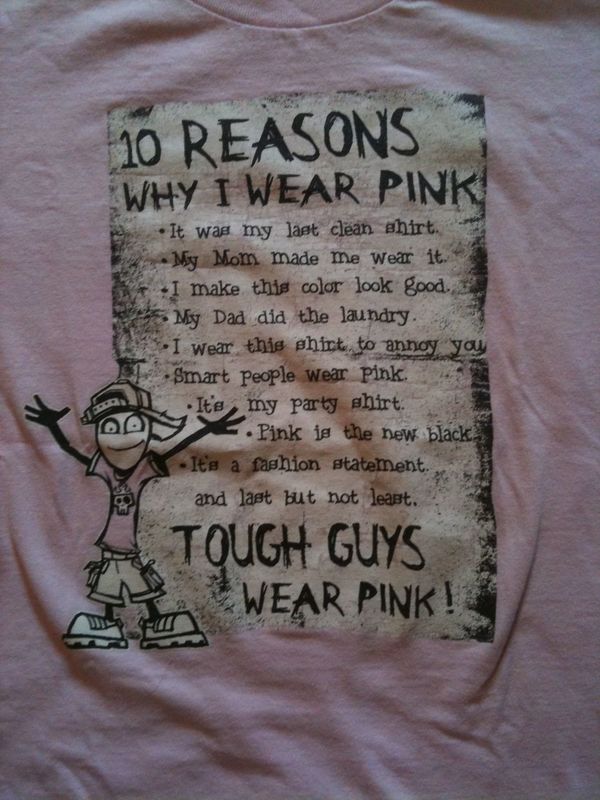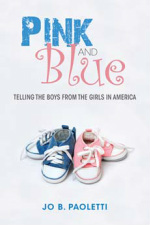Hi! I was wondering if you could help...my 9 yr old son generally wears 'boy clothes' and he loves the science and nature pictures on the t shirts. He's lately become more aware of gendered clothing as a problem and wrote a letter to Lands End recently requesting that they offer science oriented t shirts for girls as he best friend is a girl who likes science and he found it very unfair ( they wrote a nice reply). Today we went to the store to get him some new sneakers and he wanted the pink ones. We got them as I don't have a problem with that but although he was sure about getting them he was also a little concerned that he would get harassed by the other boys about them. We talked about it and he was undeterred but wants to have a good 'come back' in case he gets teased to educate others that ' pink is for everyone'. I thought perhaps you could help as I find your page so informative about these matters. Thanks so much, A___
Throughout early childhood, kids know that being a boy or a girl is a very important part of their identity. They also believe that what makes them a boy or a girl is their clothing, their toys, their hair, and other external clues, not their anatomy. Kids from 2-6 are power enforcers of gender stereotypes, through peer pressure and also in their roles as consumers. Historically, the more pre-school children have been allowed or expected to chose their own toys and clothing, the more gendered these items have become.
By the age of five or six, most children begin to understand that sex has to do with their bodies, not their clothes, toys, or room decor, and they start to relax the rules, or even play around with them. They may still enforce the rules by teasing, bullying, or otherwise “punishing” children who break gender rules. They may especially pick on kids who are outsiders for some other reason, even while they are more tolerant and protective of close friends or siblings.
As adolescence approaches, they start to see the gender rules of early childhood as babyish and even unfair. Girls at this age look to teenagers and young adult women as role models for how to dress, and may become vehemently anti-pink. (They also may trade girly, princessy styles for clothing their parents find sexually precocious, but that is the marketplace in 2017.) Boys — like your son — look for ways to violate gender rules as well. One of my favorite illustrations in Pink and Blue is this shirt, worn by the son of a former student when he was about your son’s age.
Any other suggestions?



